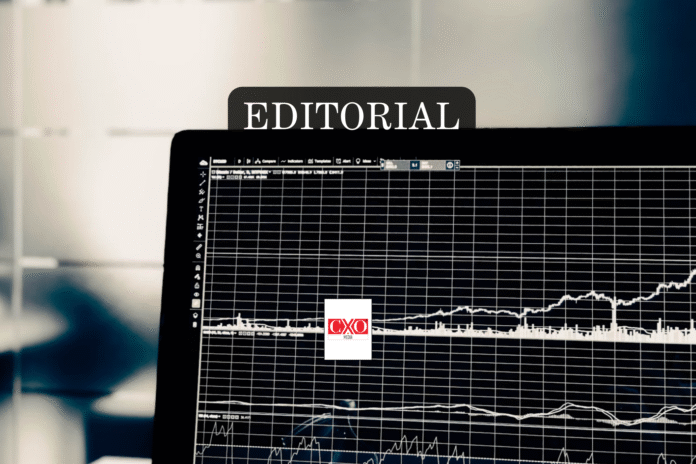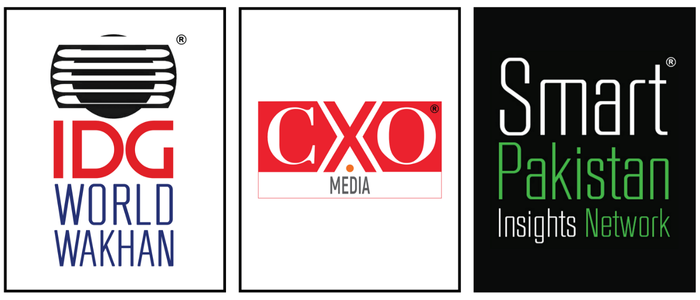Hungary, a nation traditionally celebrated for its rich cultural heritage, architectural grandeur, and famous thermal baths, is now carving out a new identity on the global stage through its rapidly growing electric vehicle (EV) industry. This shift towards high-tech industry is being powered by strategic partnerships, notably with several leading Chinese corporations. These alliances are significantly transforming Hungary’s industrial landscape, catapulting it from its historical focus on conventional manufacturing and agriculture to becoming a pivotal player in the innovative and competitive global EV market.The partnerships between Hungarian and Chinese companies are deep and multifaceted, impacting more than just economic metrics; they are reshaping the very fabric of Hungary’s economic strategy. These collaborations are not just about capital investments; they encompass technology transfer, research and development, and the creation of high-value job opportunities. This is a deliberate move by Hungary to harness the technological prowess of Chinese giants to leapfrog into the forefront of the green technology race.
Furthermore, these strategic alliances are pivotal in positioning Hungary as a bridge between East and West, enhancing its geopolitical significance. As the world moves towards more sustainable modes of transportation, Hungary’s role in the production and innovation of EV technology not only boosts its domestic economy but also sets a precedent for economic transformation through international cooperation. This burgeoning sector promises to make Hungary a critical node in the global network of green technology and sustainable development, marking a significant shift from its traditional economic activities to becoming a leader in the next-generation technology sector.
Groundbreaking Investments and Infrastructure Developments
The transformation of Hungary into an electric vehicle (EV) powerhouse is significantly driven by a series of groundbreaking investments from China, most notably the €7.3 billion infusion by Contemporary Amperex Technology Limited (CATL) to construct Europe’s largest EV battery plant on Hungarian soil. This monumental project, upon completion, is expected to generate approximately 9,000 jobs, directly impacting the local economy by providing high-quality employment opportunities. Furthermore, the facility will play a critical role in the European automotive supply chain, supplying essential components to prestigious carmakers like Mercedes-Benz, BMW, and Volkswagen. This not only enhances Hungary’s manufacturing capabilities but also integrates it more deeply into the global automotive industry’s value chain.
Complementing these industrial developments, the Budapest-Belgrade railway, revitalized under the Belt and Road Initiative (BRI), represents a significant upgrade in Hungary’s logistical and infrastructure capabilities. This railway is pivotal for the efficient transport of goods and services across Europe, especially critical for the automotive industry that requires rapid and reliable logistics for parts and finished products. The modernization of this railway line not only boosts Hungary’s logistical framework but also enhances its connectivity with major European markets, further solidifying its position as a central hub in the continent’s transport network.
Beyond the immediate benefits of job creation and infrastructural enhancements, these investments are indicative of deeper economic integration with global markets, ensuring that Hungary’s growth is robust and sustainable. The strategic placement of such large-scale manufacturing facilities within the country does more than just solidify its role in the EV market; it lays down a foundation for future technological advancements and economic prosperity. By attracting foreign direct investment and cutting-edge technology, Hungary is setting itself up as a leader in the green technology sector, poised to capitalize on the increasing global shift towards sustainable and environmentally friendly technologies. Moreover, the presence of such significant Chinese investment is a testament to the strategic partnerships Hungary has cultivated, which are pivotal in its economic strategy. These partnerships not only bring capital but also technological expertise and a gateway to Asian markets, further diversifying Hungary’s economic engagements and reducing its dependence on traditional European economic ties. This shift towards a more balanced international cooperation positions Hungary as a key player in the global economy, especially in the burgeoning field of electric vehicles and green technology. These developments are transformative, propelling Hungary from a traditional economy to a frontrunner in global technological innovation, with a particular emphasis on sustainability and high-tech industries.
Technological Advancements and Industry Impact
The dynamic partnerships between Hungary and Chinese corporations such as NIO and BYD have been instrumental in catalyzing a wave of technological transfers, particularly revolutionizing Hungary’s capabilities in battery technology and electric motor manufacturing. These partnerships are at the forefront of Hungary’s industrial innovation, bringing not just investments but also cutting-edge technologies and valuable research opportunities. For example, NIO’s strategic collaboration with Hungary’s Istvan Szechenyi University Foundation is a cornerstone initiative aimed at driving the green transformation of the automotive sectors in both China and Hungary. This initiative focuses on developing new, innovative technologies that can significantly enhance the efficiency and environmental friendliness of vehicles produced not just in Hungary, but globally.
The technological advancements brought about by these collaborations are substantially broadening the horizons of Hungary’s automotive industry. The entry and increasing involvement of global automotive giants like Mercedes-Benz and BMW in the Hungarian market is a testament to this transformation. These companies are not only bringing in capital but are also contributing to the diversification and enhancement of the local industry’s competitiveness on the European stage. As a result, Hungary is rapidly emerging as a central hub for EV innovation and manufacturing, drawing further investments and expertise from around the world. Moreover, the presence of BYD’s operations, including their ambitious plans to establish a manufacturing plant for their high-end electric vehicles, further underscores Hungary’s pivotal role in the future of the European automotive industry. This facility will not only serve as a production hub but also as a center for innovation, focusing on developing technologies that can be deployed across Europe and beyonD.
The ripple effects of these technological transfers are indeed profound, providing Hungary with a substantial competitive edge. By fostering a skilled workforce and pioneering research and development in green technologies, Hungary is positioning itself at the forefront of the sustainable practices revolution. These efforts align perfectly with global shifts towards more environmentally friendly and sustainable industrial practices, marking Hungary as a leading nation in this crucial field. Furthermore, these technological advancements are creating a robust ecosystem for the EV industry in Hungary, characterized by a strong supply chain, advanced manufacturing processes, and an increasing alignment with global environmental goals. This ecosystem not only supports Hungary’s economic growth but also contributes to its strategic objectives of becoming more energy independent and reducing its carbon footprint. This transformative shift is pivotal as it positions Hungary not just as a participant but as a leader in the global movement towards sustainable automotive solutions.
Geopolitical Implications and Strategic Alignments
Hungary’s strategic “opening to the East” policy, which emphasizes strengthening ties with China, is significantly reshaping its geopolitical landscape. This pivotal shift is not just about economic gains but also about repositioning Hungary in the complex web of global politics. By fostering closer relationships with one of the world’s leading economies, Hungary is diversifying its economic partnerships beyond its traditional European confines. This not only enhances its leverage in international discussions but also allows it to act as a conduit between divergent geopolitical blocs, offering it a unique position in global affairs.
The collaborations with China, part of a broader strategy, are crucial for enhancing Hungary’s economic independence and flexibility in global markets. By aligning closely with China, Hungary navigates the complexities of international trade and economics more adeptly. This strategic partnership supports Hungary’s aim to secure a stable and prosperous future for its citizens by relying less on traditional economic powers and more on emerging global players. Moreover, it positions Hungary as a potential mediator and bridge between the East and the West, especially significant within the context of the European Union’s economic and political dynamics, where Hungary often seeks to balance its traditional Western alignments with its Eastern engagements.
Additionally, these strategic alignments with China are anticipated to be sustainable in the long term. They are intricately linked with Hungary’s national goals for environmental sustainability and technological innovation. By focusing on partnerships that emphasize sustainable and green technologies, Hungary not only advances its technological capabilities but also contributes to global environmental goals. This commitment is evident in the substantial investments in green projects like the development of EV technology and infrastructure, which align with broader global initiatives towards reducing carbon footprints and enhancing energy efficiency. To add further, these partnerships underpin Hungary’s strategic geopolitical moves, such as its participation in China’s Belt and Road Initiative, which involves significant infrastructure projects like the Budapest-Belgrade railway. These initiatives not only enhance Hungary’s physical connectivity with its neighbors and other regions but also its strategic importance as a hub in central Europe. The economic benefits derived from these projects also bolster Hungary’s role and influence within the European Union, while providing it with the tools to navigate the geopolitical challenges of the 21st century. This strategic foresight in external relations is positioning Hungary as a formidable player in the global arena, capable of leveraging its international partnerships to enhance its national interests and influence wider regional and global outcomes.
A Model for Global Collaboration and Technological Progress
Hungary’s strategic engagement with Chinese partnerships to enhance its electric vehicle (EV) industry showcases the profound potential of international collaboration in driving economic and technological advancement. These partnerships do much more than provide an immediate boost to Hungary’s economy; they strategically position Hungary as a central player in the global EV market and serve as a paradigm for other nations. This model illustrates how countries can leverage international cooperation to not only advance technological capabilities but also strengthen their economic frameworks.
As these collaborations continue to evolve and deepen, Hungary’s stature on the global stage, particularly within the EV sector, is poised to grow significantly. This ongoing development could establish a benchmark for how smaller nations can utilize global alliances to boost their technological landscapes and economic stability. The success story of Hungary’s collaboration with China in the EV domain underscores the benefits of aligning with technologically advanced partners to catalyze industrial growth and innovation. Moreover, the ripple effects of such partnerships are vast, extending beyond mere technological transfers to include enhancements in infrastructure, job creation, and economic diversification. These comprehensive benefits underscore the multifaceted value of Hungary’s strategic international relationships. As the world moves towards more sustainable and technologically driven economies, Hungary’s approach provides a valuable lesson on the strategic utilization of international partnerships to achieve substantial and sustainable economic growth and technological advancement.
References:
- https://www.beev.co/en/blog/electric-cars/vague-electrique-chinoise-byd-debarque-en-force-en-europe-avec-de-grandes-ambitions/
- https://english.news.cn/europe/20240522/d030b10a6f364326b492abf3ec45fc20/c.html
- https://tribune.com.pk/story/2467529/hungary-metamorphosing-into-an-ev-powerhouse
- https://news.cgtn.com/news/2024-05-09/China-and-Hungary-nurture-a-deepening-technological-partnership-1trGWg8oR0I/p.html





